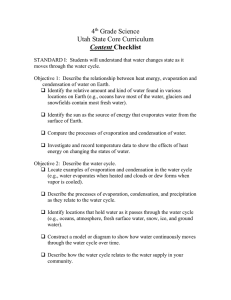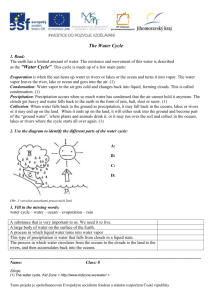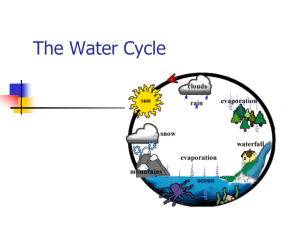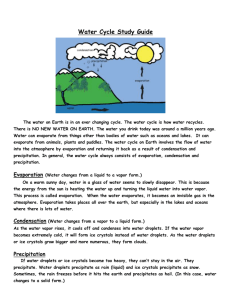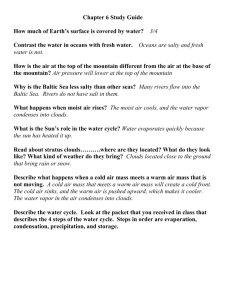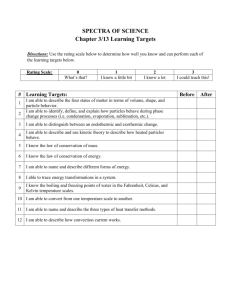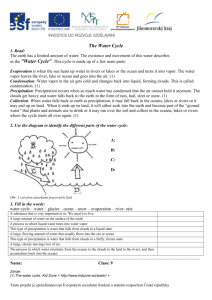oceans cloudy
advertisement
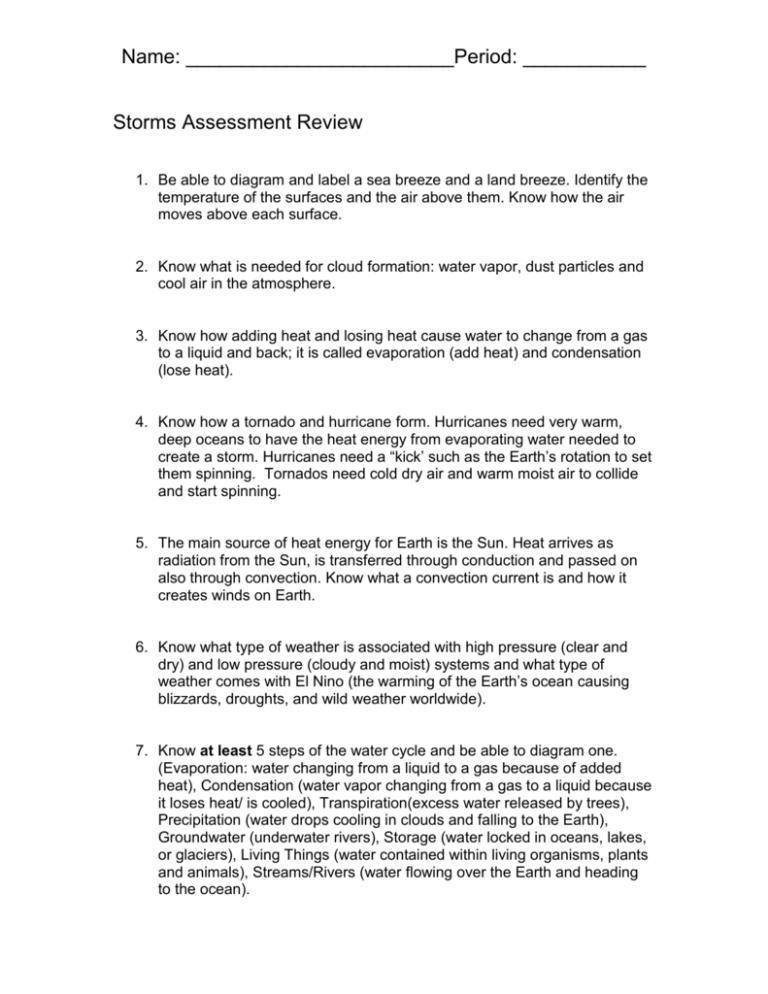
Name: ________________________Period: ___________ Storms Assessment Review 1. Be able to diagram and label a sea breeze and a land breeze. Identify the temperature of the surfaces and the air above them. Know how the air moves above each surface. 2. Know what is needed for cloud formation: water vapor, dust particles and cool air in the atmosphere. 3. Know how adding heat and losing heat cause water to change from a gas to a liquid and back; it is called evaporation (add heat) and condensation (lose heat). 4. Know how a tornado and hurricane form. Hurricanes need very warm, deep oceans to have the heat energy from evaporating water needed to create a storm. Hurricanes need a “kick’ such as the Earth’s rotation to set them spinning. Tornados need cold dry air and warm moist air to collide and start spinning. 5. The main source of heat energy for Earth is the Sun. Heat arrives as radiation from the Sun, is transferred through conduction and passed on also through convection. Know what a convection current is and how it creates winds on Earth. 6. Know what type of weather is associated with high pressure (clear and dry) and low pressure (cloudy and moist) systems and what type of weather comes with El Nino (the warming of the Earth’s ocean causing blizzards, droughts, and wild weather worldwide). 7. Know at least 5 steps of the water cycle and be able to diagram one. (Evaporation: water changing from a liquid to a gas because of added heat), Condensation (water vapor changing from a gas to a liquid because it loses heat/ is cooled), Transpiration(excess water released by trees), Precipitation (water drops cooling in clouds and falling to the Earth), Groundwater (underwater rivers), Storage (water locked in oceans, lakes, or glaciers), Living Things (water contained within living organisms, plants and animals), Streams/Rivers (water flowing over the Earth and heading to the ocean).

